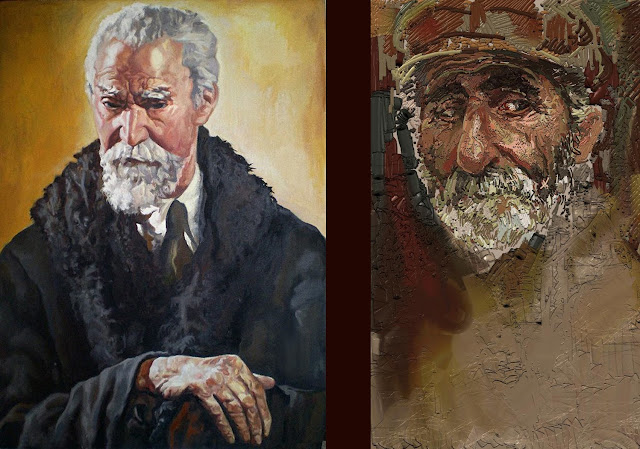Nava Lubelski is a visual artist whose work has been seen in galleries in the United States and Europe. She was born and raised in the Soho section of Manhattan when it was still an epicentre of bohemian life, and was a long time resident of the Williamsburg section of Brooklyn, a neighbourhood made famous by artists and hipsters. Now she lives in Asheville, NC.
Nava Lubelski's work is based on processes of stitching and staining. She takes soiled canvases and embroiders bright thread over the mess, making a colourful topography of something we usually turn away from. Her canvases are reminiscent of down to earth, domestic tasks. Splattered and stained with drips and splotches, the fabric of these paintings is sewn into with an obsessive, sometimes maniacal hand as Lubelski explores the contradictory activities of spoiling and mending. Working with hand and machine embroidery on ink-splashed and torn muslin, she calls attention to the contours of spots and holes in the fabric.
In her artist’s statement, Lubelski describes her process in terms foreign to those of the stereotypically masculine world of abstract expressionism. She describes her staining as “spoiling” and her stitching as “mending”. The pieces are meant to suggest a duality of accident or wildness versus care and precision.
“I do find this approach congenial. My taste in art—especially painting and drawing, but also other mediums—tends towards the strange, the mutant, the science fictionesque. This isn’t because I hate nature, but rather because I feel that art should offer something else, a surrogate.
My work explores the contradictions between the impulse to destroy and the compulsion to mend. I consider these shapes to be, not abstractions, but rather actual representation of stains and spills as they appear in painting, in the home and in the urban landscape. The work is a process of mending. Stains are unredeemable, problematic or shameful and it has traditionally been a woman's job to attempt to eradicate them or otherwise discard the "ruined" item. My process of redeeming these stains through enhancing, decorating, elevating or rehabilitating is about understanding why we dismiss or embrace certain ideas, forms or media.”

























